Comparative Analysis of Different Iterative Methods for Solving Current–Voltage Characteristics of Double and Triple Diode Models of Solar Cells
Abstract
:1. Introduction
- The paper points out the nonlinearity of the relationship between current and voltage in DDMs and TDMs;
- The paper compares different iterative methods for the calculation of current as a function of voltage for DMMs and TDMs;
- Based on the obtained results, the applicability of the tested methods is discussed;
- The time consumed by each of the mentioned methods is also analyzed;
- Special attention is paid to the impact of the initial conditions on the required number of iterations for a certain accuracy.
2. Double and Triple Diode Models
3. Iterative Methods
3.1. Newton’s Method
| Algorithm 1: Procedure of Newton’s iterative method. |
| Define initial solution x0 and stopping criteria |
| Set the counter n to 1 |
| Calculate the next value of the solution |
| while |
| end while |
| Return xn |
3.2. Modified Newton’s Method
| Algorithm 2: Procedure of modified Newton’s iterative method. |
| Define initial solution x0 and stopping criteria |
| Set the counter n to 1 |
| Calculate the next value of the solution |
| while |
| end while |
| Return xn |
3.3. Secant Method
| Algorithm 3: Procedure of Secant’s iterative method. |
| Define initial solution x0 and stopping criteria |
| For one input data take x0 = abs(x0) and x1= −abs(x0) |
| Set the counter n to 2 |
| Calculate the next value of the solution |
| while |
| end while |
| Return xn |
3.4. Regula Falsi Method
| Algorithm 4: Procedure of Regula Falsi method. |
| Define initial solution x0 and stopping criteria |
| Set the counter n to 1 |
| while |
| end while |
| Return xn |
3.5. Iterative Lambert W Method
| Algorithm 5: Procedure of iterative Lambert W method. |
| Define initial solution x0 and stopping criteria |
| Set the counter n to 1 |
| while |
| end while |
| Return xn |
4. Numerical Results
4.1. DDM
4.1.1. RTC France Solar Cell
4.1.2. Photowatt-PWP201 Modules
4.2. TDM
5. Conclusions
Author Contributions
Funding
Institutional Review Board Statement
Informed Consent Statement
Data Availability Statement
Acknowledgments
Conflicts of Interest
List of Abbreviations
| ABC | Artificial bee colony |
| BBO | Biogeography-based optimization |
| BLPSO | Biogeography-based learning particle swarm optimization |
| BPFPA | Bee pollinator flower pollination algorithm |
| BSA | Backtracking search algorithm |
| CGBO | Chaotic gradient-based optimizer |
| CLSHADE | Chaotic successful history-based adaptive DE variants |
| CLPSO | Comprehensive learning particle swarm optimization |
| CNMSMA | Chaotic Nelder–Mead slime mould algorithm |
| COA | Chaotic optimization approach |
| CS | Cuckoo search |
| CSO | Cuckoo search optimization |
| CWOA | Chaotic whale optimization algorithm |
| DDM | Double diode model |
| DE | Differential evolution |
| EHHO | Enhanced Harris Hawks optimization |
| EO | Equilibrium optimizer |
| EOTLBO | Either–or teaching learning-based algorithm |
| EABOA | Enhanced adaptive butterfly optimization algorithm |
| ELPSO | Enhanced leader particle swarm optimization |
| FA | Firefly algorithm |
| GA | Genetic algorithm |
| GAMNU | Genetic algorithm based on non-uniform mutation |
| GBO | Gradient-based optimizer |
| GSK | Gaining–sharing knowledge-based algorithm |
| GOTLBO | Generalized oppositional teaching learning-based optimization |
| GTO–HBA | Gorilla troops optimizer–honey badger algorithm |
| HBA–GTO | Honey badger algorithm and artificial gorilla troops optimizer |
| HFAPS | Hybrid firefly and pattern search algorithms |
| IJAYA | Improved JAYA optimization algorithm |
| ILWF | Iterative Lambert W function |
| JAYA | Sanskrit word meaning victory or triumph |
| LCNMSE | Laplacian Nelder–Mead spherical evolution |
| LWF | Lambert W function |
| MNM | Modified Newton method |
| NM | Newton’s method |
| OBWOA | Opposition-based whale optimization algorithm |
| PSO | Particle swarm optimization |
| PGJAYA | Performance-guided JAYA algorithm |
| pSFS | Perturbed stochastic fractal search |
| R-II | Rao-II algorithm |
| R-III | Rao-III algorithm |
| RFM | Regula Falsi method |
| SFS | Stochastic fractal search |
| SDM | Single diode model |
| SM | Secant method |
| SMA | Slime mould algorithm |
| STFT | Special trans function theory |
| STLBO | Simplified teaching-learning-based optimization |
| TDM | Triple diode model |
| TLABC | Teaching–learning-based artificial bee colony |
| WHHO | Whippy Harris Hawks optimization algorithm |
References
- Premkumar, M.; Karthick, K.; Sowmya, R. A Review on Solar PV Based Grid Connected Microinverter Control Schemes and Topologies. Int. J. Renew. Energy Dev. 2018, 7, 171. [Google Scholar] [CrossRef]
- Ali, Z.M.; Diaaeldin, I.M.; Abdel Aleem, S.H.E.; El-Rafei, A.; Abdelaziz, A.Y.; Jurado, F. Scenario-Based Network Reconfiguration and Renewable Energy Resources Integration in Large-Scale Distribution Systems Considering Parameters Uncertainty. Mathematics 2021, 9, 26. [Google Scholar] [CrossRef]
- Saric, M.; Hivziefendic, J.; Konjic, T.; Ktena, A. Distributed Generation Allocation Considering Uncertainties. Int. Trans. Electr. Energy Syst. 2018, 28, e2585. [Google Scholar] [CrossRef]
- Ali, Z.M.; Diaaeldin, I.M.; El-Rafei, A.; Hasanien, H.M.; Abdel Aleem, S.H.E.; Abdelaziz, A.Y. A Novel Distributed Generation Planning Algorithm via Graphically-Based Network Reconfiguration and Soft Open Points Placement Using Archimedes Optimization Algorithm. Ain Shams Eng. J. 2021, 12, 1923–1941. [Google Scholar] [CrossRef]
- Mostafa, M.H.; Abdel Aleem, S.H.E.; Ali, S.G.; Abdelaziz, A.Y. Energy-Management Solutions for Microgrids. In Distributed Energy Resources in Microgrids: Integration, Challenges and Optimization; Elsevier: Amsterdam, The Netherlands, 2019; pp. 483–515. [Google Scholar]
- Almalaq, A.; Alqunun, K.; Refaat, M.M.; Farah, A.; Benabdallah, F.; Ali, Z.M.; Aleem, S.H.E.A. Towards Increasing Hosting Capacity of Modern Power Systems through Generation and Transmission Expansion Planning. Sustainability 2022, 14, 2998. [Google Scholar] [CrossRef]
- Ćalasan, M.; Abdel Aleem, S.H.E.; Bulatović, M.; Rubežić, V.; Ali, Z.M.; Micev, M. Design of Controllers for Automatic Frequency Control of Different Interconnection Structures Composing of Hybrid Generator Units Using the Chaotic Optimization Approach. Int. J. Electr. Power Energy Syst. 2021, 129, 106879. [Google Scholar] [CrossRef]
- Lukačević, O.; Almalaq, A.; Alqunun, K.; Farah, A.; Ćalasan, M.; Ali, Z.M.; Abdel Aleem, S.H.E. Optimal CONOPT Solver-Based Coordination of Bi-Directional Converters and Energy Storage Systems for Regulation of Active and Reactive Power Injection in Modern Power Networks. Ain Shams Eng. J. 2022, 13, 101803. [Google Scholar] [CrossRef]
- Rawa, M.; Al-Turki, Y.; Sindi, H.; Ćalasan, M.; Ali, Z.M.; Abdel Aleem, S.H.E. Current-Voltage Curves of Planar Heterojunction Perovskite Solar Cells—Novel Expressions Based on Lambert W Function and Special Trans Function Theory. J. Adv. Res. 2022; in press. [Google Scholar] [CrossRef]
- Gnetchejo, P.J.; Ndjakomo Essiane, S.; Ele, P.; Wamkeue, R.; Mbadjoun Wapet, D.; Perabi Ngoffe, S. Important Notes on Parameter Estimation of Solar Photovoltaic Cell. Energy Convers. Manag. 2019, 197, 111870. [Google Scholar] [CrossRef]
- Ćalasan, M.; Abdel Aleem, S.H.E.; Zobaa, A.F. On the Root Mean Square Error (RMSE) Calculation for Parameter Estimation of Photovoltaic Models: A Novel Exact Analytical Solution Based on Lambert W Function. Energy Convers. Manag. 2020, 210, 112716. [Google Scholar] [CrossRef]
- Rawa, M.; Abusorrah, A.; Al-Turki, Y.; Calasan, M.; Micev, M.; Ali, Z.M.; Mekhilef, S.; Bassi, H.; Sindi, H.; Aleem, S.H.E.A. Estimation of Parameters of Different Equivalent Circuit Models of Solar Cells and Various Photovoltaic Modules Using Hybrid Variants of Honey Badger Algorithm and Artificial Gorilla Troops Optimizer. Mathematics 2022, 10, 1057. [Google Scholar] [CrossRef]
- Rawa, M.; Calasan, M.; Abusorrah, A.; Alhussainy, A.A.; Al-Turki, Y.; Ali, Z.M.; Sindi, H.; Mekhilef, S.; Aleem, S.H.E.A.; Bassi, H. Single Diode Solar Cells—Improved Model and Exact Current–Voltage Analytical Solution Based on Lambert’s W Function. Sensors 2022, 22, 4173. [Google Scholar] [CrossRef] [PubMed]
- Ćalasan, M.; Abdel Aleem, S.H.E.; Zobaa, A.F. A New Approach for Parameters Estimation of Double and Triple Diode Models of Photovoltaic Cells Based on Iterative Lambert W Function. Sol. Energy 2021, 218, 392–412. [Google Scholar] [CrossRef]
- Araújo, N.M.F.T.S.; Sousa, F.J.P.; Costa, F.B. Equivalent models for photovoltaic cell—A review. Sci. Eng. 2020, 19, 77–98. [Google Scholar] [CrossRef]
- Conte, S.D.; de Boor, C. Elementary Numerical Analysis; Society for Industrial and Applied Mathematics: Philadelphia, PA, USA, 2017. [Google Scholar]
- Weng, X.; Heidari, A.A.; Liang, G.; Chen, H.; Ma, X.; Mafarja, M.; Turabieh, H. Laplacian Nelder-Mead Spherical Evolution for Parameter Estimation of Photovoltaic Models. Energy Convers. Manag. 2021, 243, 114223. [Google Scholar] [CrossRef]
- Ndi, F.E.; Perabi, S.N.; Ndjakomo, S.E.; Ondoua Abessolo, G.; Mengounou Mengata, G. Estimation of Single-Diode and Two Diode Solar Cell Parameters by Equilibrium Optimizer Method. Energy Rep. 2021, 7, 4761–4768. [Google Scholar] [CrossRef]
- Naeijian, M.; Rahimnejad, A.; Ebrahimi, S.M.; Pourmousa, N.; Gadsden, S.A. Parameter Estimation of PV Solar Cells and Modules Using Whippy Harris Hawks Optimization Algorithm. Energy Rep. 2021, 7, 4047–4063. [Google Scholar] [CrossRef]
- Liu, Y.; Heidari, A.A.; Ye, X.; Liang, G.; Chen, H.; He, C. Boosting Slime Mould Algorithm for Parameter Identification of Photovoltaic Models. Energy 2021, 234, 121164. [Google Scholar] [CrossRef]
- Saadaoui, D.; Elyaqouti, M.; Assalaou, K.; ben hmamou, D.; Lidaighbi, S. Parameters Optimization of Solar PV Cell/Module Using Genetic Algorithm Based on Non-Uniform Mutation. Energy Convers. Manag. X 2021, 12, 100129. [Google Scholar] [CrossRef]
- Xiong, G.; Li, L.; Mohamed, A.W.; Yuan, X.; Zhang, J. A New Method for Parameter Extraction of Solar Photovoltaic Models Using Gaining–Sharing Knowledge Based Algorithm. Energy Rep. 2021, 7, 3286–3301. [Google Scholar] [CrossRef]
- Long, W.; Wu, T.; Xu, M.; Tang, M.; Cai, S. Parameters Identification of Photovoltaic Models by Using an Enhanced Adaptive Butterfly Optimization Algorithm. Energy 2021, 229, 120750. [Google Scholar] [CrossRef]
- Kumar, C.; Raj, T.D.; Premkumar, M.; Raj, T.D. A New Stochastic Slime Mould Optimization Algorithm for the Estimation of Solar Photovoltaic Cell Parameters. Optik 2020, 223, 165277. [Google Scholar] [CrossRef]
- Xiong, G.; Zhang, J.; Shi, D.; Zhu, L.; Yuan, X. Parameter Extraction of Solar Photovoltaic Models with an Either-or Teaching Learning Based Algorithm. Energy Convers. Manag. 2020, 224, 113395. [Google Scholar] [CrossRef]
- Jiao, S.; Chong, G.; Huang, C.; Hu, H.; Wang, M.; Heidari, A.A.; Chen, H.; Zhao, X. Orthogonally Adapted Harris Hawks Optimization for Parameter Estimation of Photovoltaic Models. Energy 2020, 203, 117804. [Google Scholar] [CrossRef]
- Gude, S.; Jana, K.C. Parameter Extraction of Photovoltaic Cell Using an Improved Cuckoo Search Optimization. Sol. Energy 2020, 204, 280–293. [Google Scholar] [CrossRef]
- Premkumar, M.; Babu, T.S.; Umashankar, S.; Sowmya, R. A New Metaphor-Less Algorithms for the Photovoltaic Cell Parameter Estimation. Optik 2020, 208, 164559. [Google Scholar] [CrossRef]
- Ćalasan, M.; Jovanović, D.; Rubežić, V.; Mujović, S.; Dukanović, S. Estimation of Single-Diode and Two-Diode Solar Cell Parameters by Using a Chaotic Optimization Approach. Energies 2019, 12, 4209. [Google Scholar] [CrossRef]
- Yu, K.; Qu, B.; Yue, C.; Ge, S.; Chen, X.; Liang, J. A Performance-Guided JAYA Algorithm for Parameters Identification of Photovoltaic Cell and Module. Appl. Energy 2019, 237, 241–257. [Google Scholar] [CrossRef]
- Chen, X.; Yue, H.; Yu, K. Perturbed Stochastic Fractal Search for Solar PV Parameter Estimation. Energy 2019, 189, 116247. [Google Scholar] [CrossRef]
- Beigi, A.M.; Maroosi, A. Parameter Identification for Solar Cells and Module Using a Hybrid Firefly and Pattern Search Algorithms. Sol. Energy 2018, 171, 435–446. [Google Scholar] [CrossRef]
- Rezaee Jordehi, A. Enhanced Leader Particle Swarm Optimisation (ELPSO): An Efficient Algorithm for Parameter Estimation of Photovoltaic (PV) Cells and Modules. Sol. Energy 2018, 159, 78–87. [Google Scholar] [CrossRef]
- Oliva, D.; Abd El Aziz, M.; Ella Hassanien, A. Parameter Estimation of Photovoltaic Cells Using an Improved Chaotic Whale Optimization Algorithm. Appl. Energy 2017, 200, 141–154. [Google Scholar] [CrossRef]
- Ram, J.P.; Babu, T.S.; Dragicevic, T.; Rajasekar, N. A New Hybrid Bee Pollinator Flower Pollination Algorithm for Solar PV Parameter Estimation. Energy Convers. Manag. 2017, 135, 463–476. [Google Scholar] [CrossRef]
- Abd Elaziz, M.; Oliva, D. Parameter Estimation of Solar Cells Diode Models by an Improved Opposition-Based Whale Optimization Algorithm. Energy Convers. Manag. 2018, 171, 1843–1859. [Google Scholar] [CrossRef]
- Premkumar, M.; Jangir, P.; Ramakrishnan, C.; Nalinipriya, G.; Alhelou, H.H.; Kumar, B.S. Identification of Solar Photovoltaic Model Parameters Using an Improved Gradient-Based Optimization Algorithm with Chaotic Drifts. IEEE Access 2021, 9, 62347–62379. [Google Scholar] [CrossRef]
- Abdel-Basset, M.; Mohamed, R.; Mirjalili, S.; Chakrabortty, R.K.; Ryan, M.J. Solar Photovoltaic Parameter Estimation Using an Improved Equilibrium Optimizer. Sol. Energy 2020, 209, 694–708. [Google Scholar] [CrossRef]
- Javidy, B.; Hatamlou, A.; Mirjalili, S. Ions Motion Algorithm for Solving Optimization Problems. Appl. Soft Comput. 2015, 32, 72–79. [Google Scholar] [CrossRef]
- Kumar, S.; Kumar, D.; Sharma, J.R.; Jäntschi, L. A Family of Derivative Free Optimal Fourth Order Methods for Computing Multiple Roots. Symmetry 2020, 12, 1969. [Google Scholar] [CrossRef]
- Kumar, S.; Kumar, D.; Sharma, J.R.; Cesarano, C.; Agarwal, P.; Chu, Y.-M. An Optimal Fourth Order Derivative Free Numerical Algorithm for Multiple Roots. Symmetry 2020, 12, 1038. [Google Scholar] [CrossRef]
- Sharma, J.R.; Kumar, S.; Jäntschi, L. On Derivative Free Multiple-Root Finders with Optimal Fourth Order Convergence. Mathematics 2020, 8, 1091. [Google Scholar] [CrossRef]
- Sharma, J.R.; Kumar, S.; Jäntschi, L. On a Class of Optimal Fourth Order Multiple Root Solvers without Using Derivatives. Symmetry 2019, 11, 1452. [Google Scholar] [CrossRef] [Green Version]
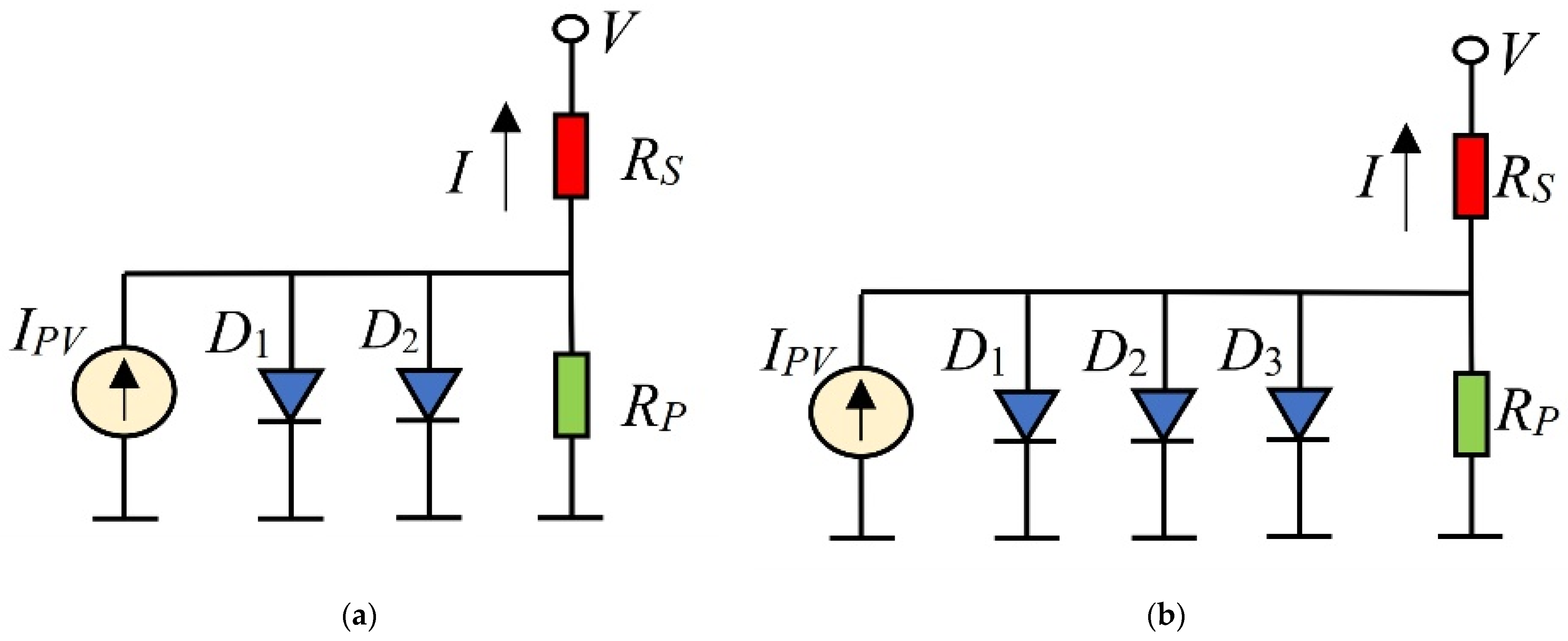
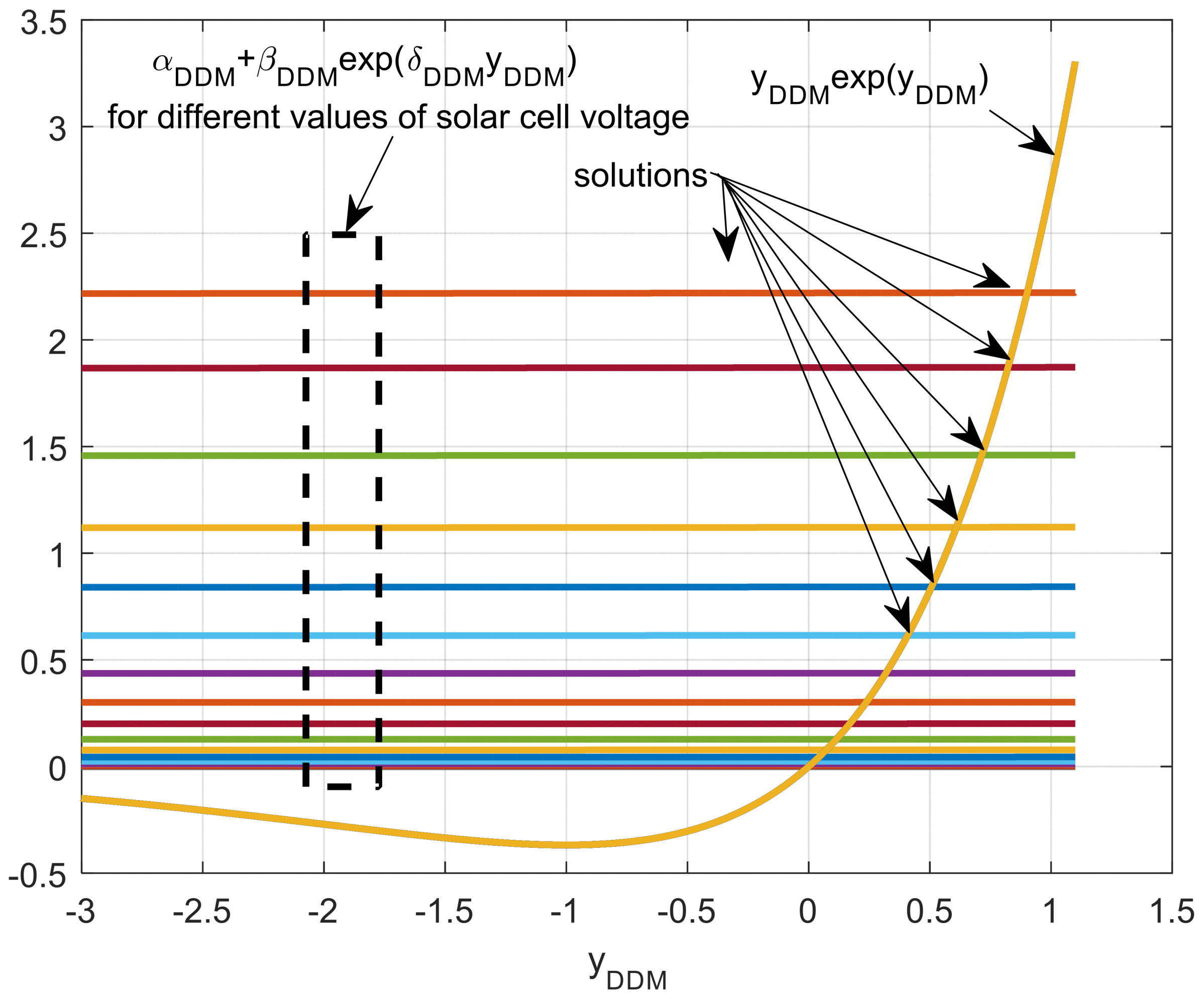
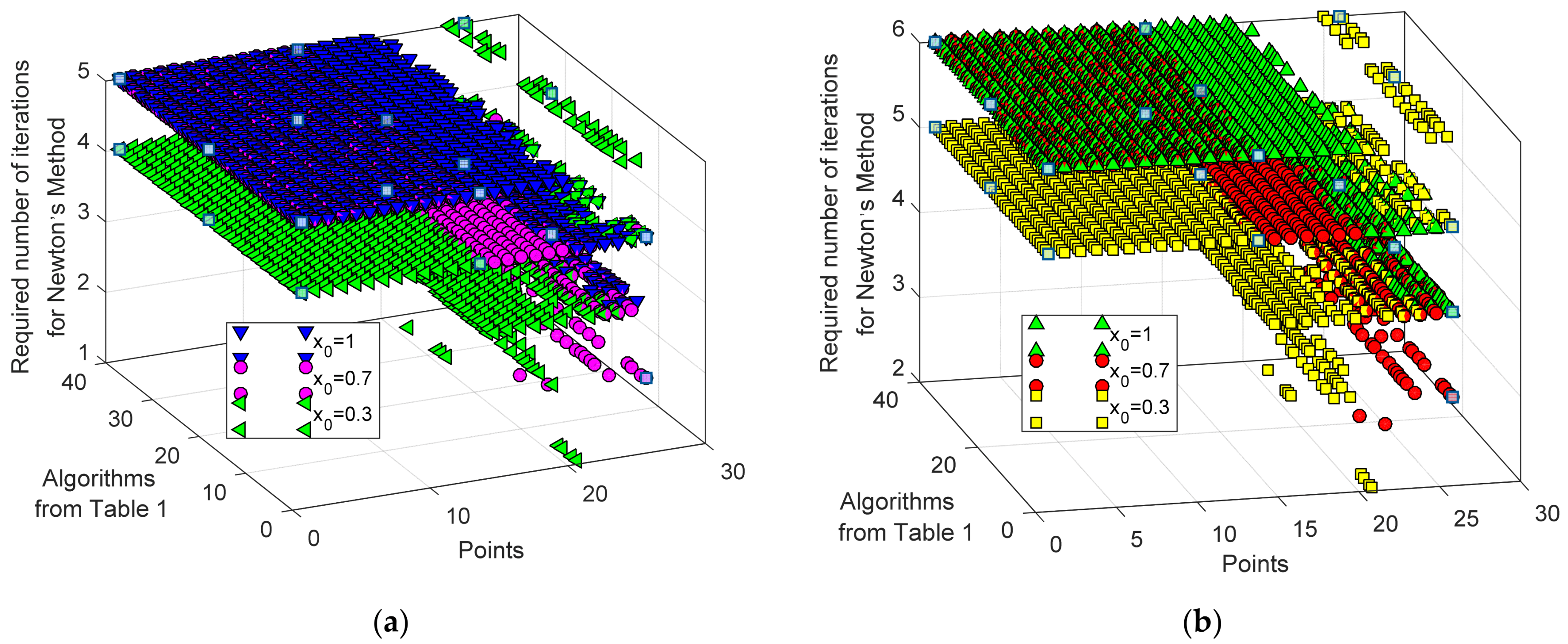
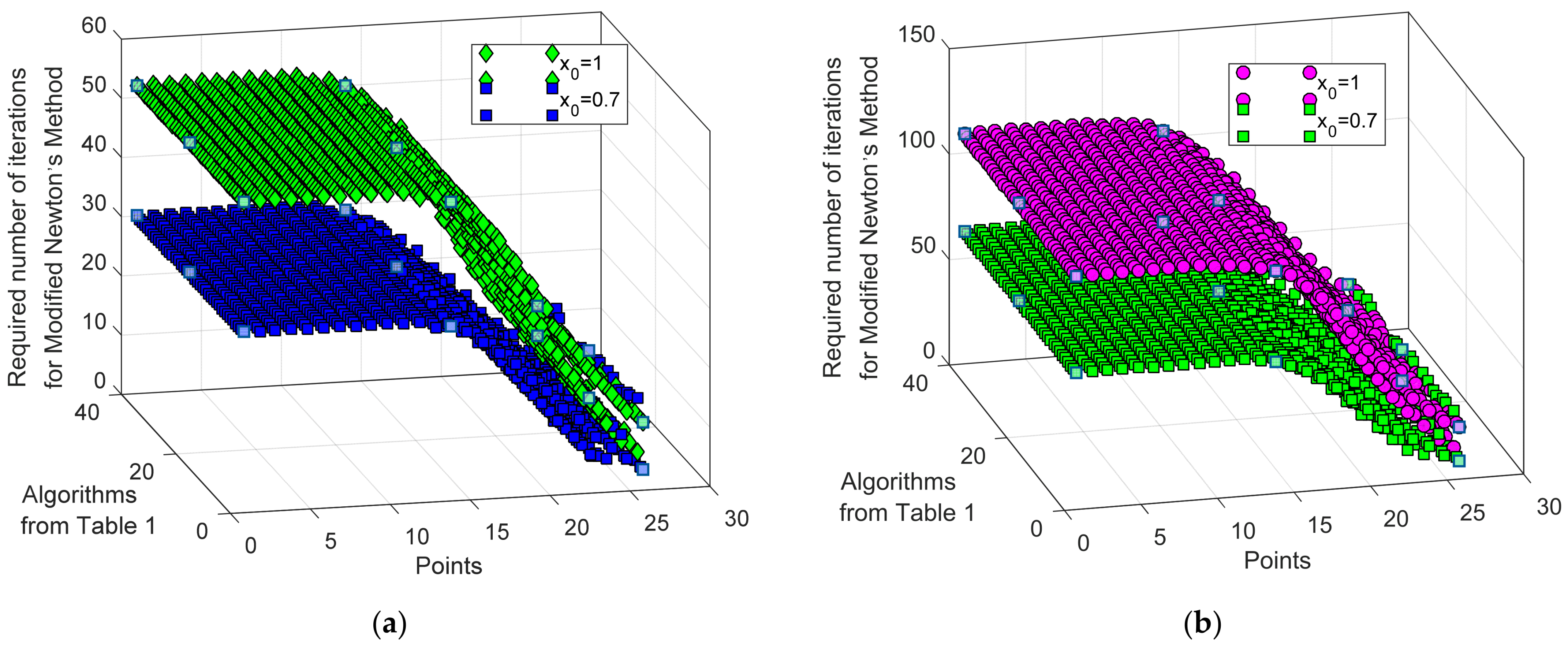

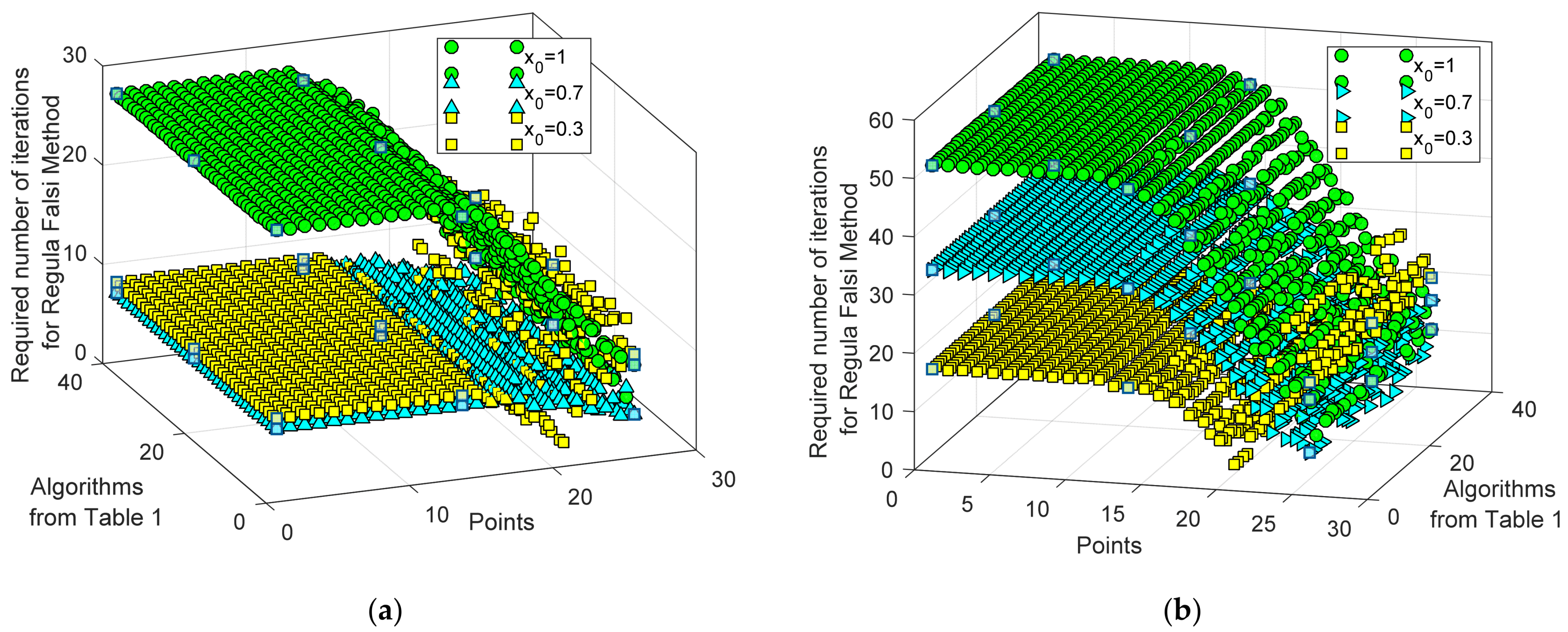
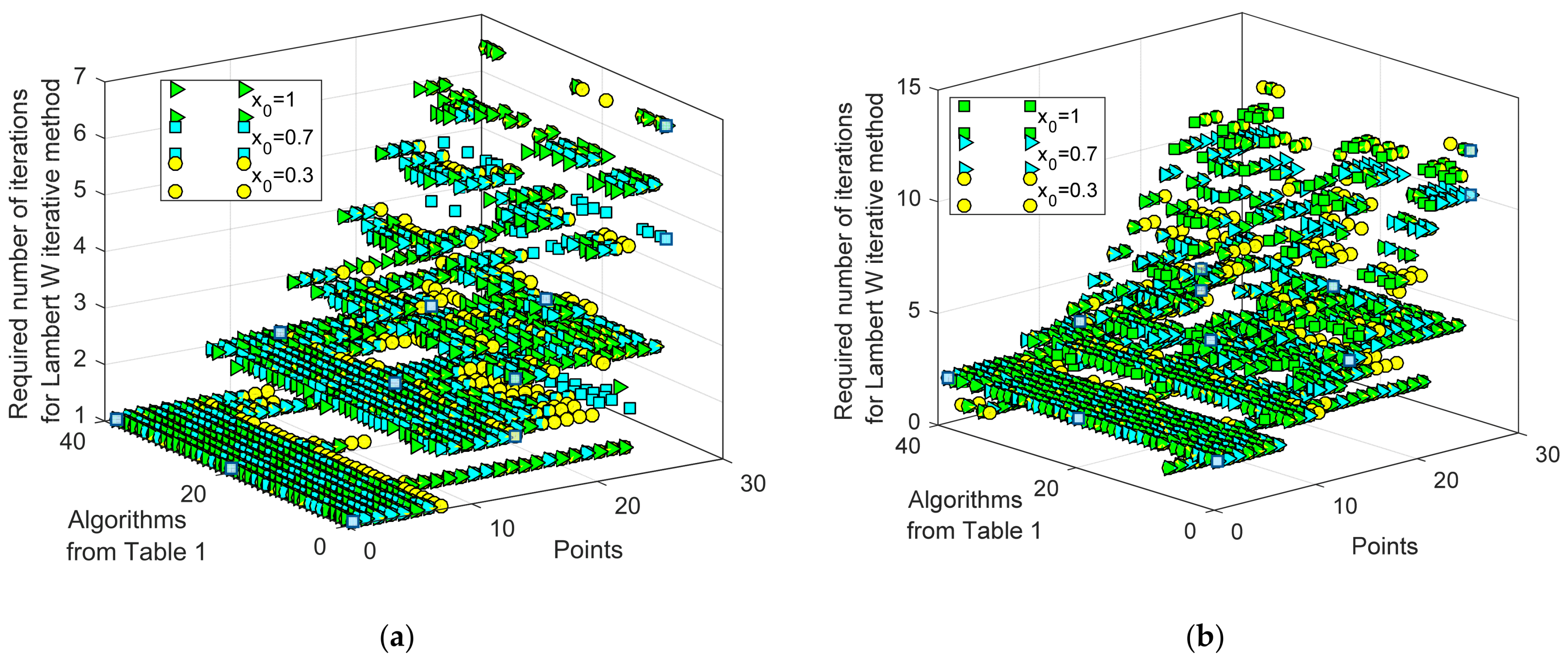
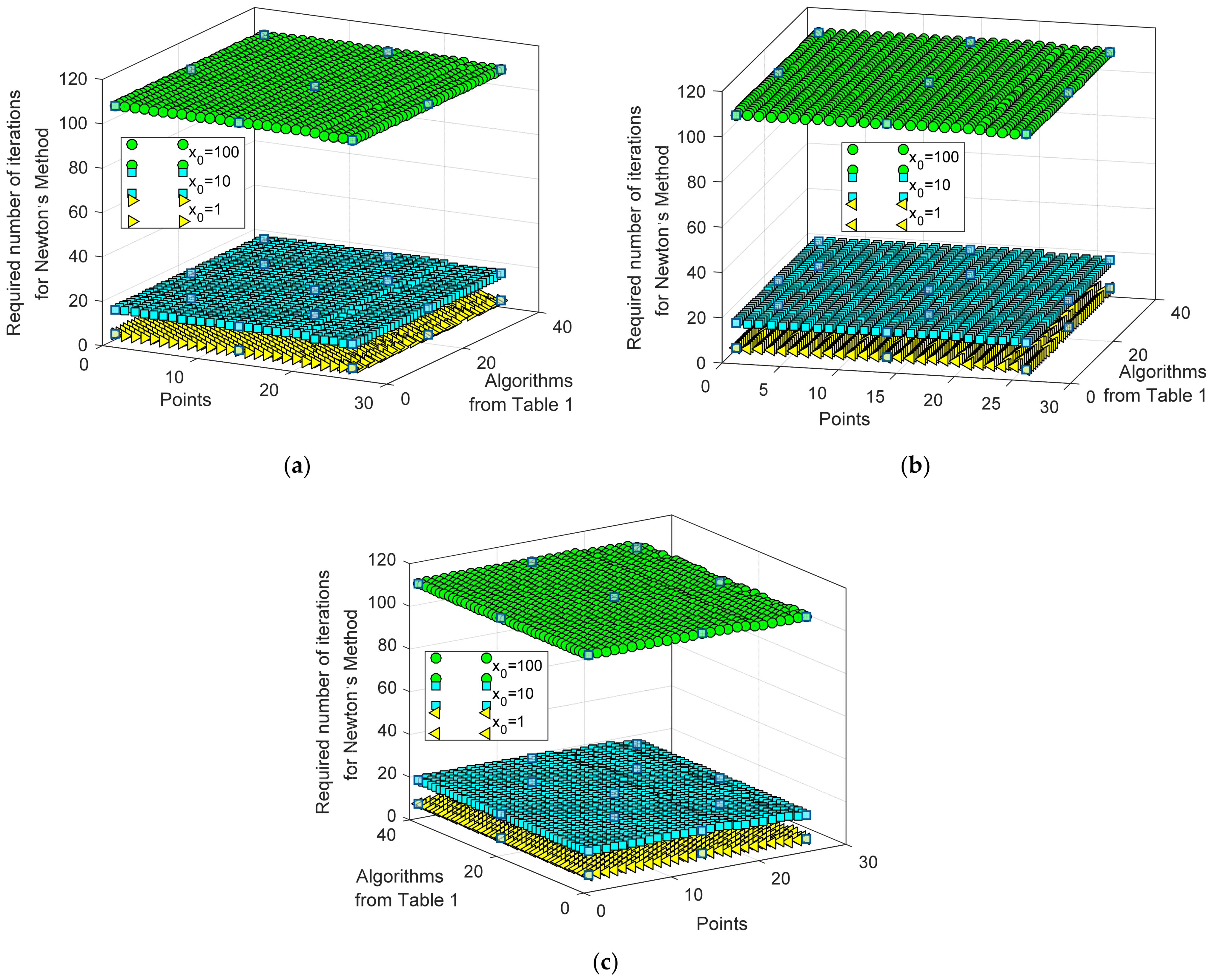

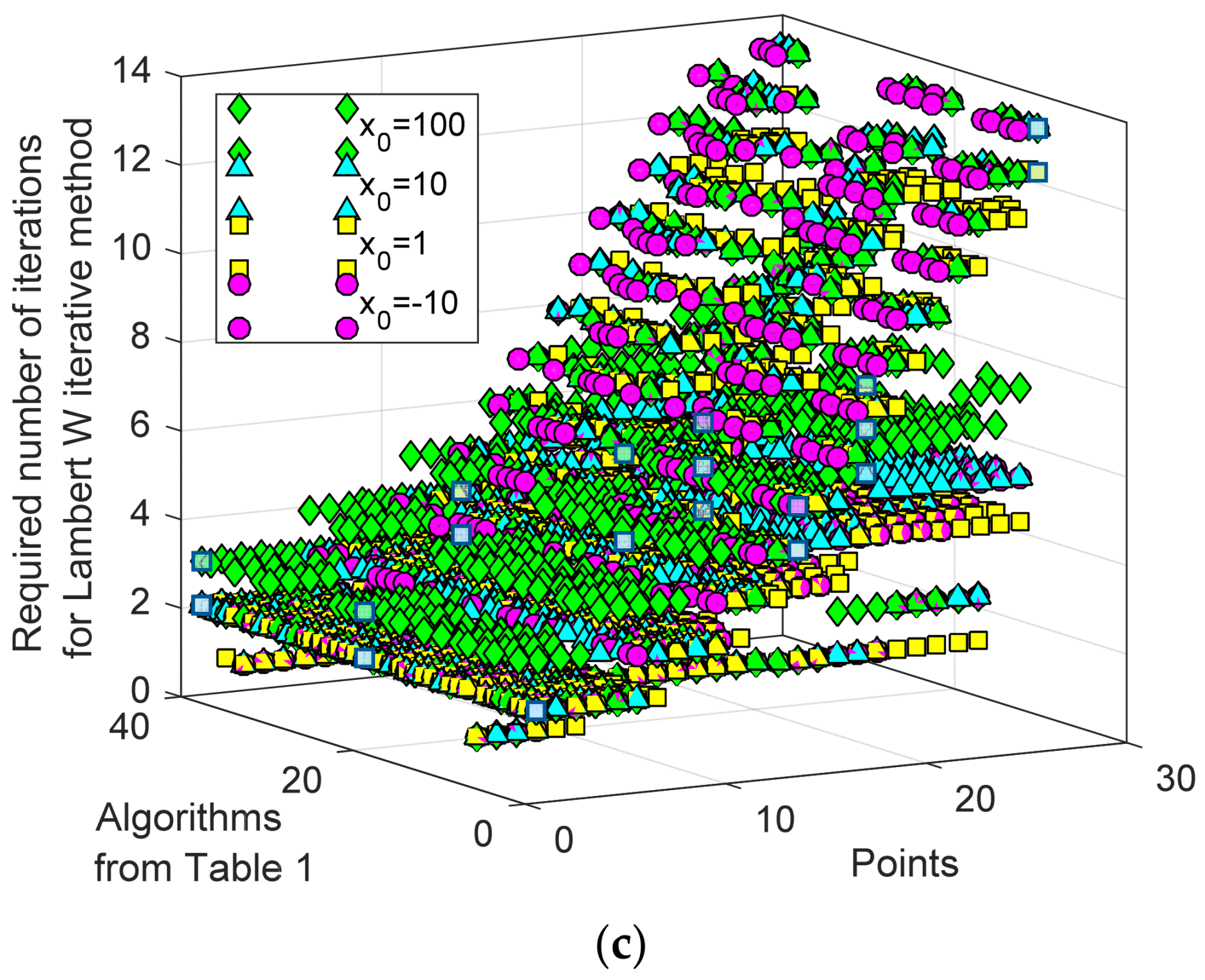
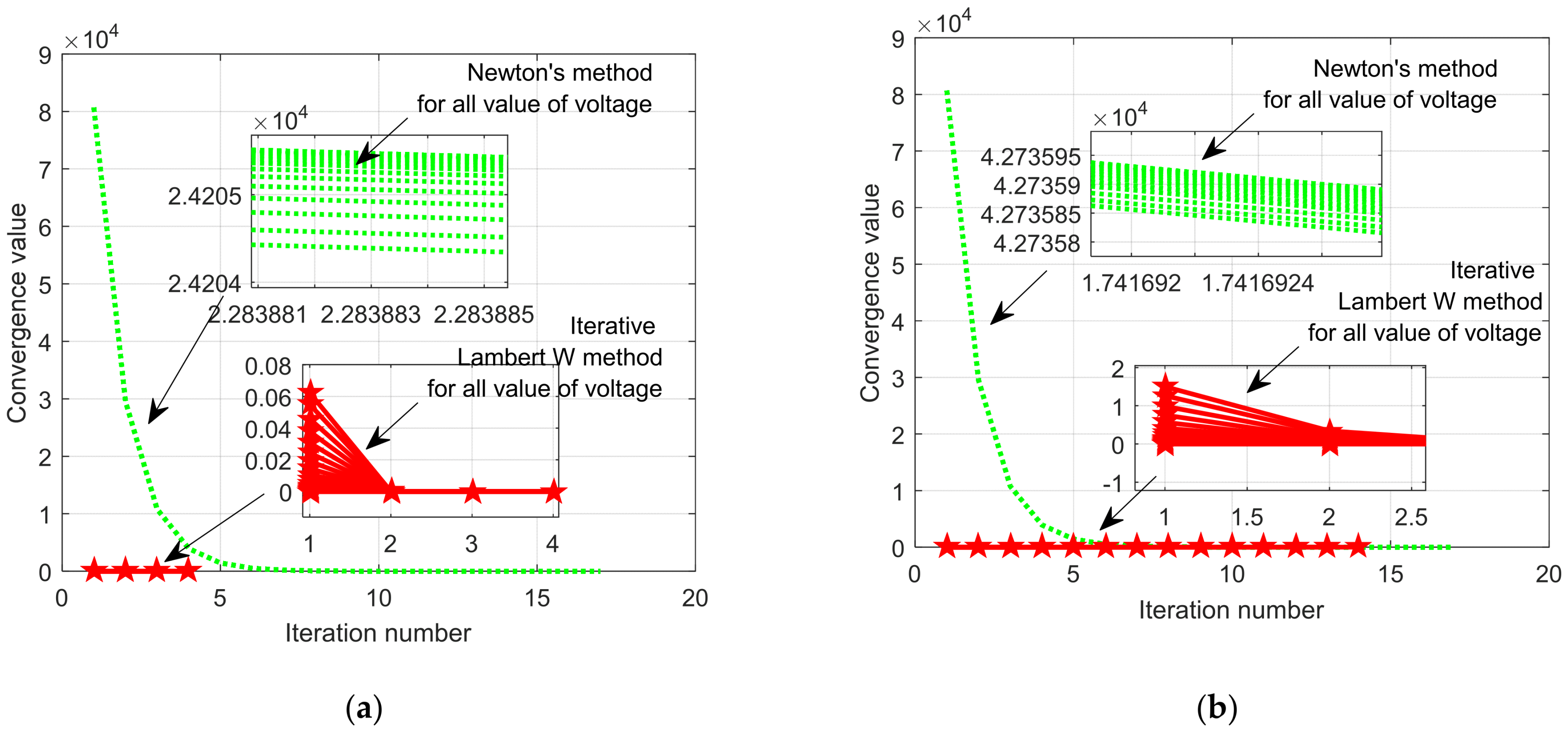
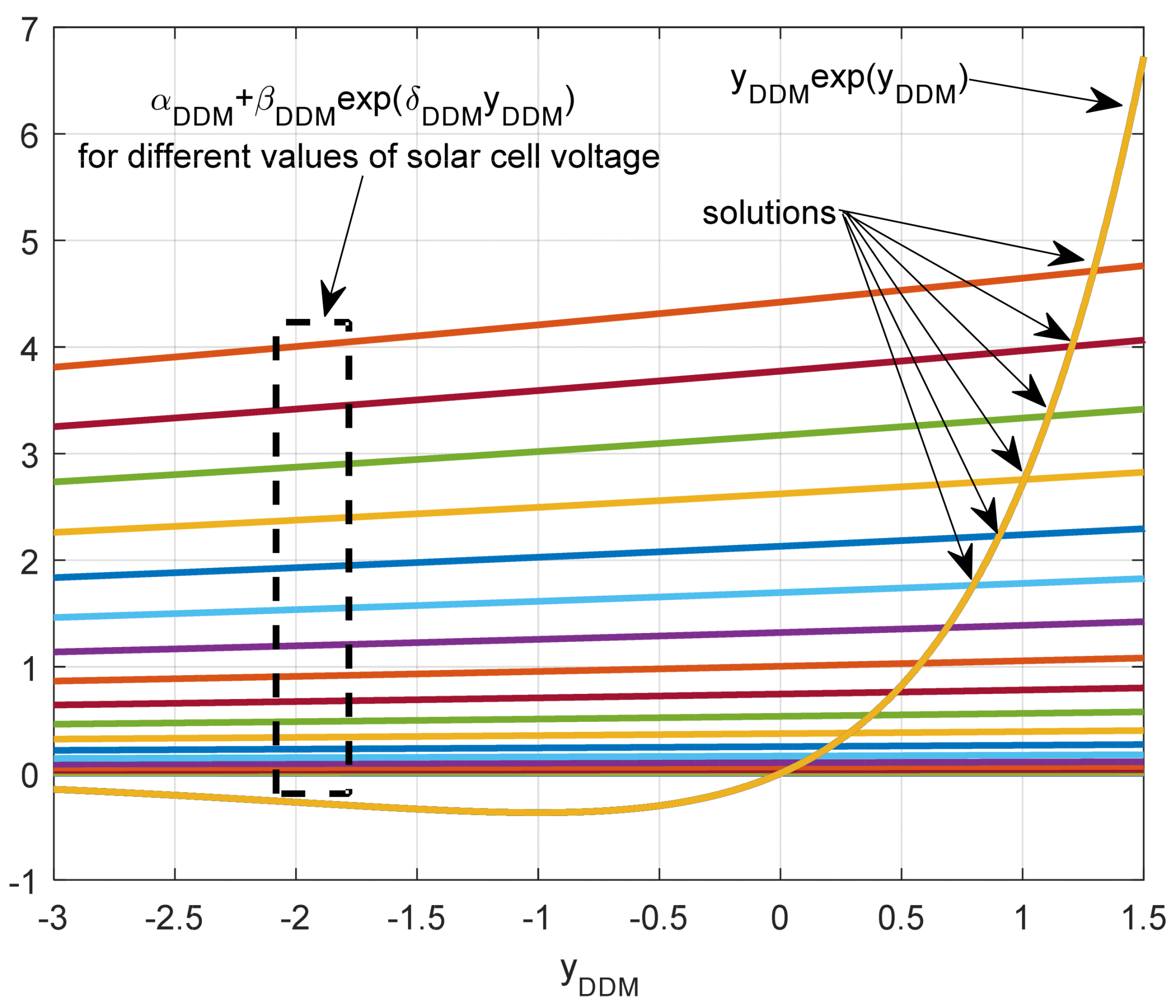
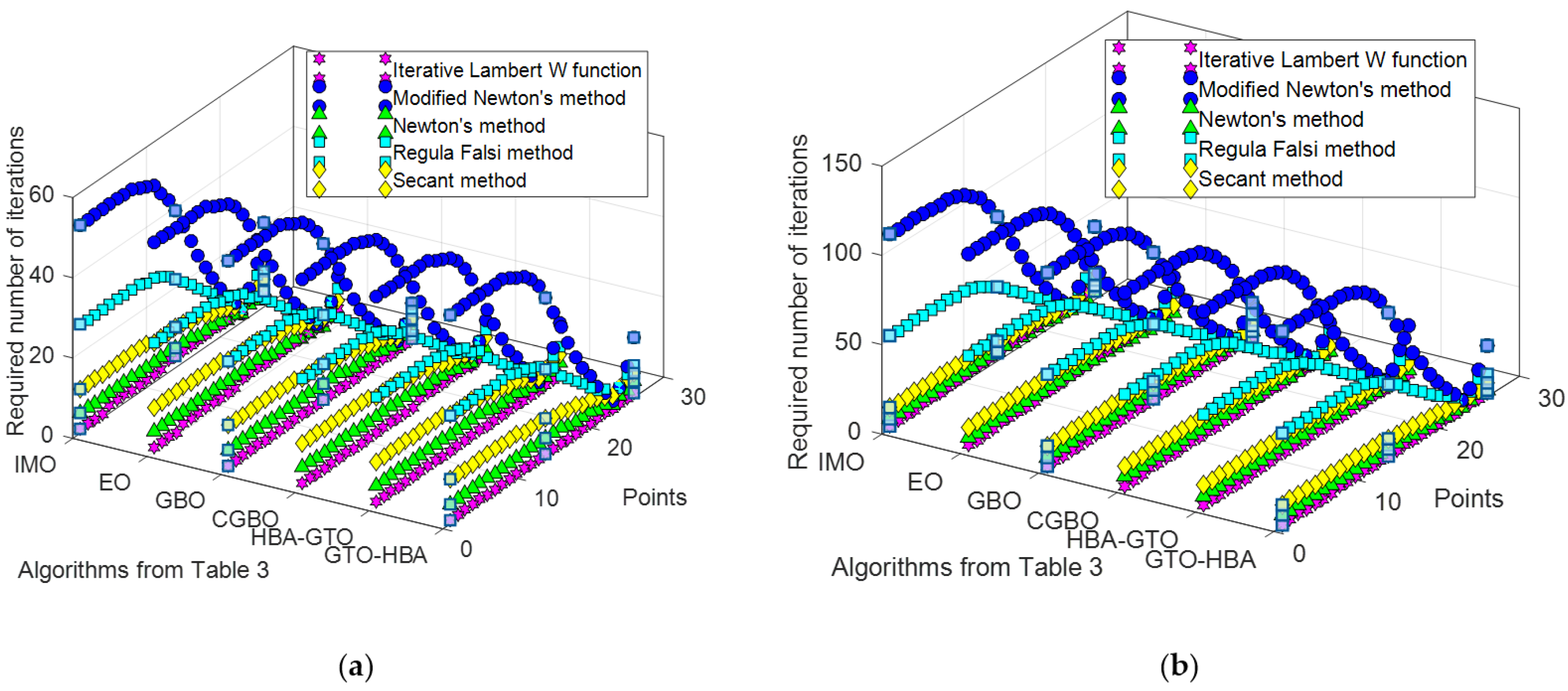

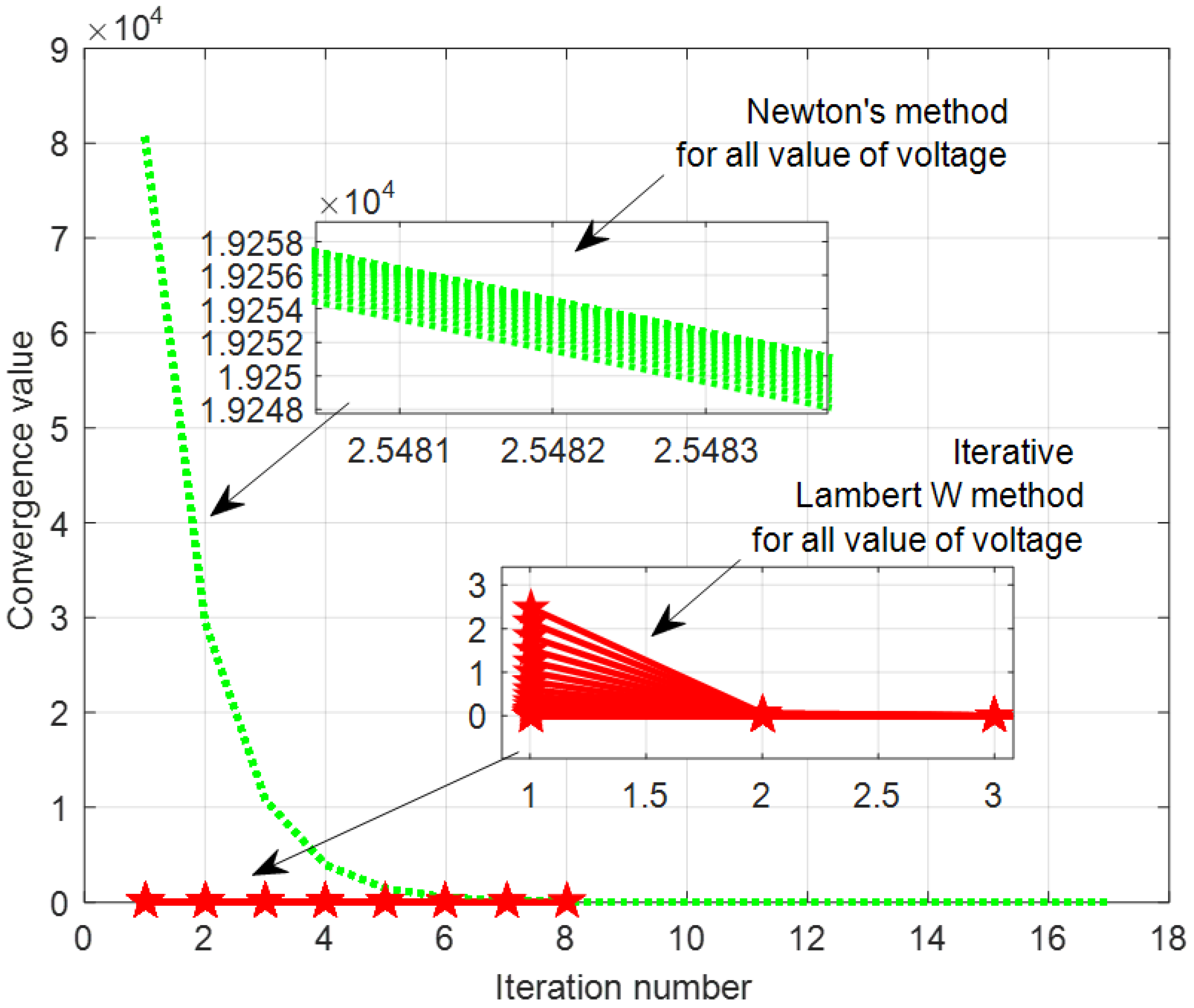
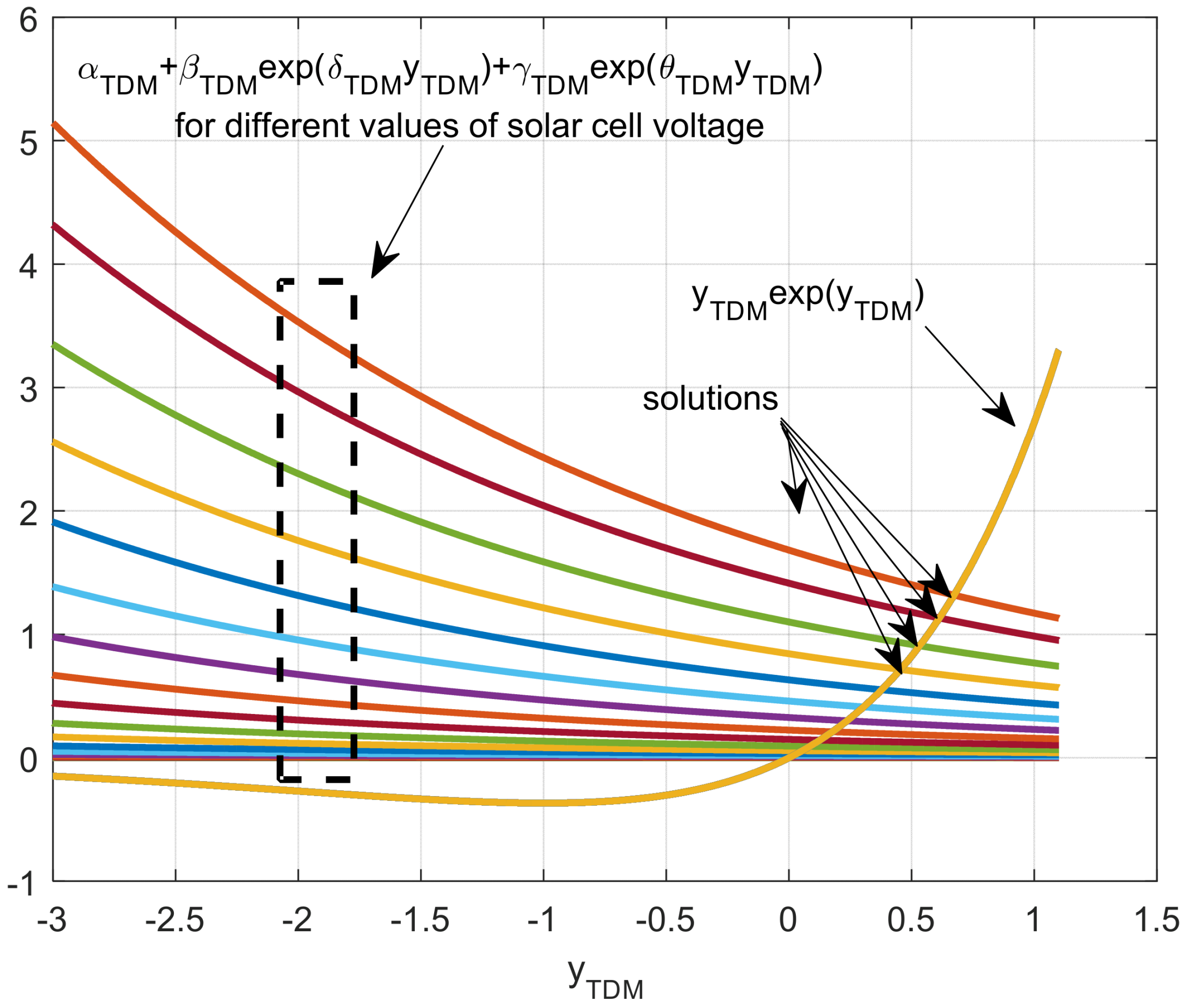


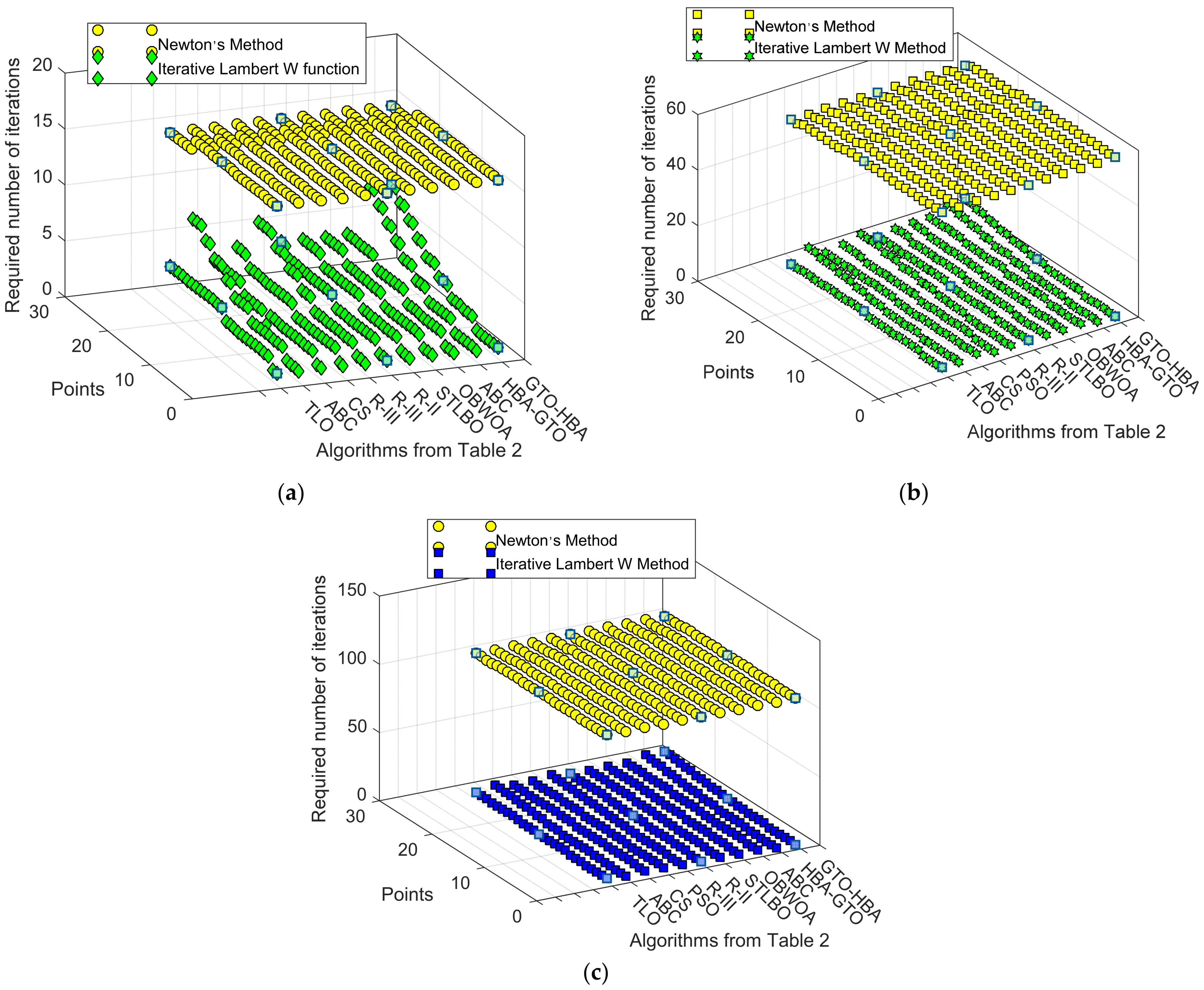
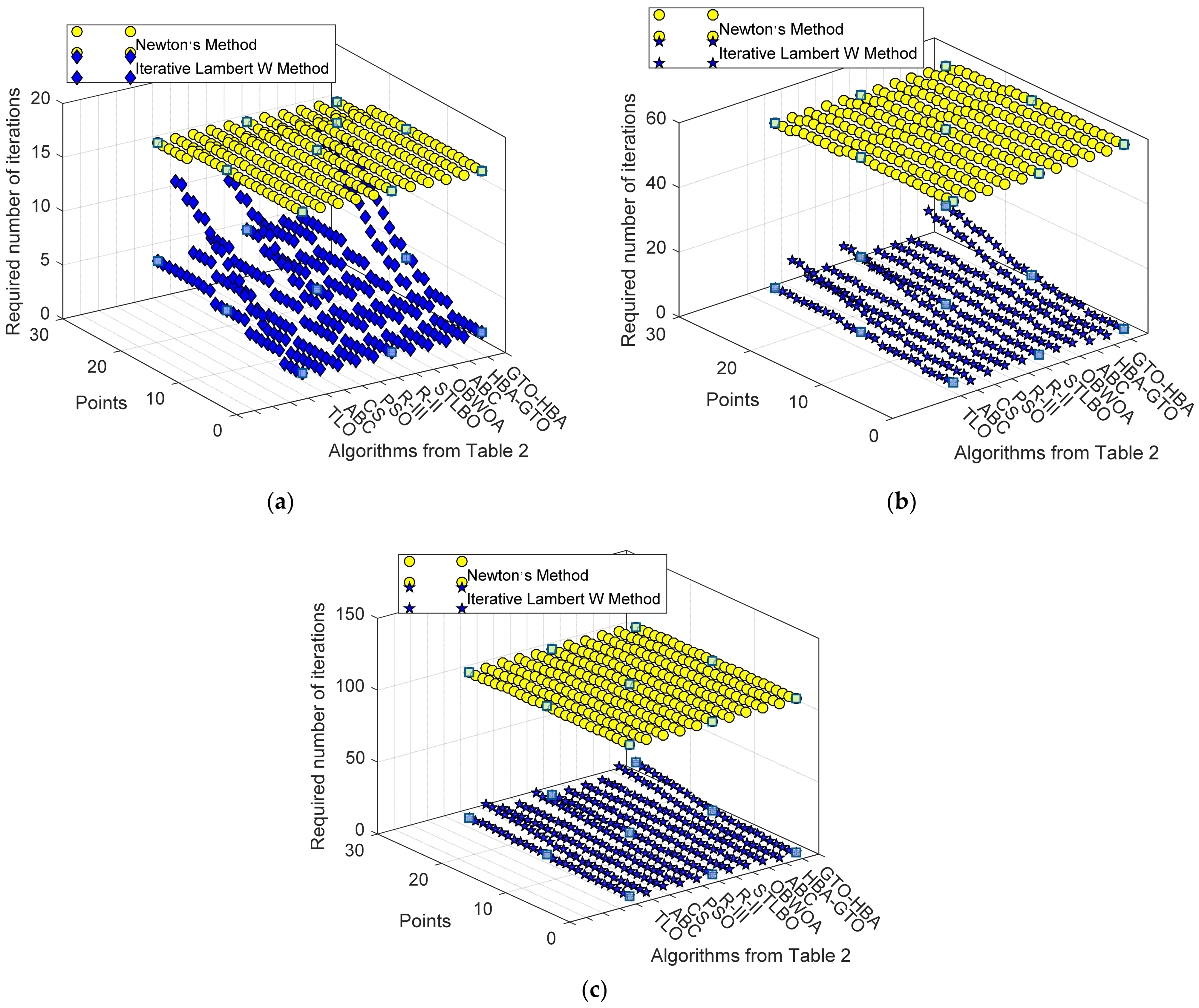

| Number | Ref. | Year | Algorithms | Ipv (A) | I01 (μA) | n1 | RS (Ω) | RP (Ω) | I02 (μA) | n2 |
|---|---|---|---|---|---|---|---|---|---|---|
| 1 | [12] | 2022 | GTO-HBA | 0.7607801 | 0.84162 | 1.999999 | 0.03679 | 55.73 | 0.2154505 | 1.44706 |
| 2 | HBA-GTO | 0.76078 | 0.841611 | 2.00000 | 0.0367905 | 55.72835 | 0.2154501 | 1.44704 | ||
| 3 | [14] | 2021 | CLSHADE | 0.76076 | 0.2044 | 1.44241 | 0.036907 | 55.53 | 0.876400 | 1.99520 |
| 4 | [17] | 2021 | LCNMSE | 0.76078100 | 0.74933000 | 2.00000000 | 0.03674000 | 55.48542000 | 0.22598000 | 1.45101700 |
| 5 | [18] | 2021 | EO | 0.76792000 | 0.39999000 | 2.00000000 | 0.03659000 | 54.17614000 | 0.26605000 | 1.46451000 |
| 6 | [19] | 2021 | WHHO | 0.76078094 | 0.22857400 | 1.45189500 | 0.03672887 | 55.42643282 | 0.727182 | 2.00000 |
| 7 | [20] | 2021 | CNMSMA | 0.76078100 | 0.22597600 | 1.45101700 | 0.036740 | 55.48545 | 0.75068100 | 1.9999990 |
| 8 | [21] | 2021 | GAMNU | 0.76082700 | 0.32245246 | 1.48102800 | 0.03636440 | 53.11079000 | 0.00027392 | 1.47010100 |
| 9 | [22] | 2021 | GSK | 0.76080000 | 0.25950000 | 1.46270000 | 0.03660000 | 54.93300000 | 0.47910000 | 1.99830000 |
| 10 | [23] | 2021 | EABOA | 0.76082865 | 0.25072000 | 1.45988481 | 0.03662660 | 55.36601290 | 0.72069000 | 1.99997318 |
| 11 | [24] | 2020 | SMA | 0.76076000 | 0.74874000 | 2.00000000 | 0.03677 | 55.71456 | 0.22652000 | 1.4546300 |
| 12 | [25] | 2020 | EOTLBO | 0.76078108 | 0.22597468 | 1.45101692 | 0.03674043 | 55.48543568 | 0.74934431 | 2.0000000 |
| 13 | [26] | 2020 | EHHO | 0.760769017 | 0.58618400 | 1.968451449 | 0.036598831 | 55.63943956 | 0.24096500 | 1.456910409 |
| 14 | [27] | 2020 | CSO | 0.76080 | 0.22730 | 1.45130 | 0.03670 | 55.43270 | 0.73840000 | 1.99990 |
| 15 | [28] | 2020 | R-II | 0.76078 | 0.74911 | 2.00000 | 0.03675 | 55.71854 | 0.22641 | 1.45471 |
| 16 | R-III | 0.76078 | 0.74814 | 2.00000 | 0.03674 | 55.71851 | 0.21911 | 1.45145 | ||
| 17 | [29] | 2019 | COA | 0.76078 | 0.22597 | 1.45102 | 0.03674 | 55.48542 | 0.749346 | 2.00000 |
| 18 | [30] | 2019 | PGJAYA | 0.76080 | 0.21031 | 1.44500 | 0.03680 | 55.81350 | 0.885340 | 2.00000 |
| 19 | GOTLBO | 0.76080 | 0.13894 | 1.72540 | 0.03650 | 53.40580 | 0.262090 | 1.46580 | ||
| 20 | JAYA | 0.76070 | 0.00608 | 1.84360 | 0.03640 | 52.65750 | 0.315070 | 1.47880 | ||
| 21 | STLBO | 0.76080 | 0.23364 | 1.45380 | 0.03670 | 55.33820 | 0.684940 | 2.00000 | ||
| 22 | TLABC | 0.76080 | 0.33673 | 1.48610 | 0.03610 | 55.06760 | 0.071730 | 1.93160 | ||
| 23 | CLPSO | 0.76070 | 0.25843 | 1.46250 | 0.03670 | 57.94220 | 0.386150 | 1.94350 | ||
| 24 | BLPSO | 0.76080 | 0.27189 | 1.46740 | 0.03660 | 61.13450 | 0.435050 | 1.96620 | ||
| 25 | DE/BBO | 0.76060 | 0.00122 | 1.87910 | 0.03580 | 58.40180 | 0.372200 | 1.49560 | ||
| 26 | [31] | 2019 | CLPSO | 0.76112 | 0.00237 | 1.68481 | 0.03619 | 52.40069 | 0.338750 | 1.48612 |
| 27 | BLPSO | 0.76056 | 0.17895 | 1.69574 | 0.03553 | 64.79937 | 0.315600 | 1.48789 | ||
| 28 | IJAYA | 0.76079 | 0.49461 | 1.88559 | 0.03671 | 54.65515 | 0.220690 | 1.45021 | ||
| 29 | SFS | 0.76078 | 0.65647 | 1.99990 | 0.03669 | 55.30604 | 0.237210 | 1.45509 | ||
| 30 | pSFS | 0.76078 | 0.84161 | 2.00000 | 0.03679 | 55.72835 | 0.215450 | 1.44705 | ||
| 31 | [32] | 2018 | FA | 0.76101 | 0.00000 | 2.00000 | 0.03671 | 49.18670 | 0.292634 | 1.47134 |
| 32 | HFAPS | 0.76078 | 0.22597 | 1.45101 | 0.03674 | 55.48550 | 0.749358 | 2.00000 | ||
| 33 | ABC | 0.76081 | 0.19268 | 1.43800 | 0.03686 | 55.93352 | 0.999587 | 1.98372 | ||
| 34 | [33] | 2018 | ELPSO | 0.76081 | 1.00000 | 1.83576 | 0.03755 | 55.92047 | 0.099168 | 1.38609 |
| 35 | BSA | 0.76162 | 0.41639 | 1.50537 | 0.03539 | 54.45518 | 0.000001 | 2.00000 | ||
| 36 | ABC | 0.76072 | 0.28670 | 1.46915 | 0.03666 | 58.29956 | 0.247485 | 1.96837 | ||
| 37 | GA | 0.76886 | 0.66062 | 1.60874 | 0.02914 | 51.11600 | 0.455149 | 1.62890 | ||
| 38 | ELPSO | 0.76081 | 1.00000 | 1.83576 | 0.03755 | 55.92047 | 0.099168 | 1.38609 | ||
| 39 | [34] | 2017 | CWOA | 0.76077 | 0.24150 | 1.45651 | 0.03666 | 55.20160 | 0.600000 | 1.98990 |
| 40 | [35] | 2017 | BPFPA | 0.76000 | 0.32110 | 1.47930 | 0.03640 | 59.62400 | 0.045280 | 2.00000 |
| Number | Ref. | Year | Algorithms | Ipv (A) | I01 (μA) | n1 | RS (Ω) | RP (Ω) | I02 (μA) | n2 | I03 (μA) | n3 |
|---|---|---|---|---|---|---|---|---|---|---|---|---|
| 1 | [12] | 2022 | GTO-HBA | 0.7607602 | 0.876504 | 1.99504 | 0.0369201 | 55.6798 | 0.20441 | 1.442401 | 0.0001805 | 1.89001 |
| 2 | HBA-GTO | 0.7607601 | 0.876499 | 1.99501 | 0.0369202 | 55.6801 | 0.204401 | 1.44241 | 0.0001801 | 1.89001 | ||
| 3 | [36] | 2018 | ABC | 0.760700 | 0.2000 | 1.4414 | 0.03687 | 55.8344 | 0.500000 | 1.90000 | 0.2100 | 2.000000 |
| 4 | OBWOA | 0.760770 | 0.2353 | 1.4543 | 0.03668 | 55.4448 | 0.221300 | 2.00000 | 0.4573 | 2.000000 | ||
| 5 | STLBO | 0.760800 | 0.2349 | 1.4541 | 0.0367 | 55.2641 | 0.229700 | 2.00000 | 0.4443 | 2.000000 | ||
| 6 | [28] | 2020 | R-II | 0.760792 | 0.2600 | 1.4608 | 0.03660 | 54.9149 | 0.000006 | 1.14660 | 0.5700 | 2.020800 |
| 7 | R-III | 0.760791 | 0.2100 | 1.7714 | 0.03670 | 55.3571 | 0.220000 | 1.45130 | 0.9900 | 2.410300 | ||
| 8 | PSO | 0.760782 | 0.2500 | 1.4601 | 0.03660 | 55.3133 | 0.041000 | 1.74090 | 1.0000 | 2.251400 | ||
| 9 | CS | 0.760776 | 0.1400 | 1.4872 | 0.03630 | 53.7218 | 0.190000 | 1.47710 | 0.0310 | 4.466300 | ||
| 10 | ABC | 0.760790 | 0.3200 | 1.8666 | 0.03670 | 55.4411 | 0.230000 | 1.45210 | 0.7400 | 2.394900 | ||
| 11 | TLO | 0.760763 | 0.2800 | 1.4684 | 0.03650 | 55.3821 | 0.000670 | 1.54680 | 1.0000 | 2.322500 |
| Number | Ref. | Year | Algorithms | Ipv (A) | I01 (μA) | n1 | RS (Ω) | RP (Ω) | I02 (μA) | n2 |
|---|---|---|---|---|---|---|---|---|---|---|
| 1 | [12] | 2022 | GTO-HBA | 1.03242 | 2.5130 | 47.418 | 1.2393 | 744.724 | 3.89 × 10−6 | 50 |
| 2 | HBA-GTO | 1.0325 | 2.5150 | 47.421 | 1.23928 | 743.666 | 3.8885 × 10−6 | 49.88 | ||
| 3 | [37] | 2021 | CGBO | 1.0305 | 3.48 | 48.6428 | 1.2013 | 981.8874 | 3.89 × 10−6 | 34.7828 |
| 4 | GBO | 1.0305 | 3.47 | 48.6314 | 1.2016 | 981.2677 | 0 | 50 | ||
| 5 | [38] | 2020 | EO | 1.0288 | 9.38 × 10−4 | 47.1325 | 1.1896 | 1310.6705 | 3.96 | 49.1369 |
| 6 | [39] | 2015 | IMO | 1.0251 | 0 | 45.7618 | 1.2339 | 1849.8346 | 3.07 | 48.1472 |
| Method | Value | Stopping Criteria | |||||
|---|---|---|---|---|---|---|---|
| 10−5 | 10−10 | ||||||
| x0 = 1 | x0 = 0.7 | x0 = 0.3 | x0 = 1 | x0 = 0.7 | x0 = 0.3 | ||
| NM | Min | 3 | 1 | 1 | 4 | 2 | 2 |
| Max | 5 | 5 | 5 | 6 | 6 | 6 | |
| MNM | Min | 5 | 2 | >1000 | 10 | 4 | >1000 |
| Max | 52 | 30 | 109 | 63 | |||
| SM | Min | 5 | 2 | 2 | 6 | 4 | 3 |
| Max | 11 | 7 | 8 | 12 | 9 | 9 | |
| RFM | Min | 27 | 2 | 2 | 9 | 4 | 3 |
| Max | 5 | 17 | 15 | 52 | 34 | 28 | |
| ILWF | Min | 1 | 1 | 1 | 1 | 1 | 1 |
| Max | 7 | 6 | 7 | 13 | 11 | 13 | |
| Criteria | Method | Value | x0 | |||
|---|---|---|---|---|---|---|
| −10 | 1 | 10 | 100 | |||
| 10−5 | NM | Min | >1000 | 3 | 15 | 107 |
| Max | 5 | 16 | 108 | |||
| ILWF | Min | 1 | 1 | 1 | 1 | |
| Max | 9 | 7 | 8 | 8 | ||
| 10−10 | NM | Min | >1000 | 4 | 16 | 108 |
| Max | 6 | 17 | 109 | |||
| ILWF | Min | 1 | 1 | 1 | 1 | |
| Max | 14 | 13 | 14 | 14 | ||
| 10−15 | NM | Min | >1000 | 4 | 16 | 108 |
| Max | 7 | 18 | 110 | |||
| ILWF | Min | 2 | 2 | 2 | 2 | |
| Max | 19 | 18 | 19 | 19 | ||
| Method | Value | Stopping Criteria | |||||
|---|---|---|---|---|---|---|---|
| 10−5 | 10−10 | ||||||
| x0 = 0.9 | x0 = 1.0 | x0 = 1.2 | x0 = 0.9 | x0 = 1.0 | x0 = 1.2 | ||
| NM | Min | 2 | 2 | 2 | 3 | 3 | 3 |
| Max | 5 | 5 | 5 | 6 | 6 | 6 | |
| MNM | Min | 2 | 3 | 3 | 4 | 5 | 4 |
| Max | 64 | 52 | 73 | 125 | 109 | 151 | |
| SM | Min | 3 | 3 | 3 | 4 | 5 | 4 |
| Max | 9 | 11 | 24 | 10 | 12 | 25 | |
| RFM | Min | 3 | 3 | 3 | 5 | 5 | 5 |
| Max | 24 | 27 | 36 | 46 | 52 | 68 | |
| ILWF | Min | 1 | 1 | 1 | 1 | 1 | 1 |
| Max | 4 | 4 | 4 | 7 | 7 | 7 | |
| Criteria | Method | Value | x0 | ||
|---|---|---|---|---|---|
| 10 | 50 | 100 | |||
| 10−5 | NM | Min | 14 | 56 | 106 |
| Max | 16 | 58 | 108 | ||
| ILWF | Min | 1 | 1 | 1 | |
| Max | 5 | 6 | 6 | ||
| 10−10 | NM | Min | 15 | 57 | 107 |
| Max | 17 | 59 | 109 | ||
| ILWF | Min | 1 | 1 | 1 | |
| Max | 8 | 9 | 9 | ||
| Method | Value | Stopping Criteria | |||||
|---|---|---|---|---|---|---|---|
| 10−5 | 10−10 | ||||||
| x0 = 1.0 | x0 = 0.7 | x0 = 0.5 | x0 = 1.0 | x0 = 0.7 | x0 = 0.5 | ||
| NM | Min | 5 | 2 | 2 | 4 | 3 | 3 |
| Max | 3 | 5 | 4 | 6 | 6 | 5 | |
| MNM | Min | 5 | 2 | 2 | 10 | 5 | 4 |
| Max | 52 | 30 | 1783 | 109 | 63 | 3792 | |
| SM | Min | 5 | 3 | 3 | 6 | 5 | 4 |
| Max | 11 | 7 | 7 | 12 | 9 | 8 | |
| RFM | Min | 5 | 3 | 3 | 9 | 6 | 5 |
| Max | 27 | 17 | 12 | 52 | 34 | 25 | |
| ILWF | Min | 1 | 1 | 1 | 2 | 2 | 2 |
| Max | 7 | 6 | 6 | 13 | 11 | 12 | |
| Criteria | Method | Value | x0 | ||
|---|---|---|---|---|---|
| 10 | 50 | 100 | |||
| 10−5 | NM | Min | 15 | 56 | 107 |
| Max | 16 | 58 | 108 | ||
| ILWF | Min | 1 | 1 | 1 | |
| Max | 8 | 8 | 8 | ||
| 10−10 | NM | Min | 16 | 57 | 108 |
| Max | 17 | 59 | 109 | ||
| ILWF | Min | 2 | 2 | 2 | |
| Max | 14 | 14 | 14 | ||
Publisher’s Note: MDPI stays neutral with regard to jurisdictional claims in published maps and institutional affiliations. |
© 2022 by the authors. Licensee MDPI, Basel, Switzerland. This article is an open access article distributed under the terms and conditions of the Creative Commons Attribution (CC BY) license (https://creativecommons.org/licenses/by/4.0/).
Share and Cite
Ćalasan, M.; Al-Dhaifallah, M.; Ali, Z.M.; Abdel Aleem, S.H.E. Comparative Analysis of Different Iterative Methods for Solving Current–Voltage Characteristics of Double and Triple Diode Models of Solar Cells. Mathematics 2022, 10, 3082. https://doi.org/10.3390/math10173082
Ćalasan M, Al-Dhaifallah M, Ali ZM, Abdel Aleem SHE. Comparative Analysis of Different Iterative Methods for Solving Current–Voltage Characteristics of Double and Triple Diode Models of Solar Cells. Mathematics. 2022; 10(17):3082. https://doi.org/10.3390/math10173082
Chicago/Turabian StyleĆalasan, Martin, Mujahed Al-Dhaifallah, Ziad M. Ali, and Shady H. E. Abdel Aleem. 2022. "Comparative Analysis of Different Iterative Methods for Solving Current–Voltage Characteristics of Double and Triple Diode Models of Solar Cells" Mathematics 10, no. 17: 3082. https://doi.org/10.3390/math10173082
APA StyleĆalasan, M., Al-Dhaifallah, M., Ali, Z. M., & Abdel Aleem, S. H. E. (2022). Comparative Analysis of Different Iterative Methods for Solving Current–Voltage Characteristics of Double and Triple Diode Models of Solar Cells. Mathematics, 10(17), 3082. https://doi.org/10.3390/math10173082









